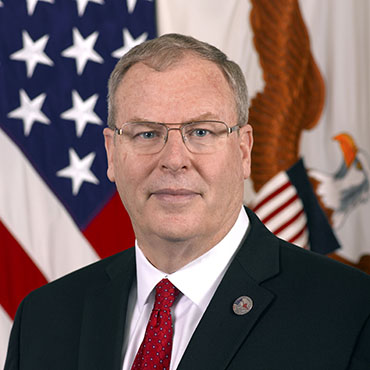Pentagon wants to go all-in on automation

Deputy Defense Secretary Robert Work foresees a near future in which men and women in combat will have wearable electronics equipped with software applications.

Deputy Defense Secretary Robert Work called for incorporating more automation into warfighting technology.
Warfare is rapidly moving in the direction of automation, and the United States has some work to do to stay ahead of its adversaries, according to Deputy Defense Secretary Robert Work.
Automation figures into each of the five pillars of the Pentagon's "third offset strategy" to shore up the United States' technological edge over adversaries, Work said in a Dec. 14 speech.
Those five pillars are machine learning; human-machine collaboration; assisted human operations, in which automation reduces the need for manpower; the full integration of humans and drones in combat; and semi-autonomous weapons that can fend off cyberattacks.
"You cannot have a human operator, operating at human speed, fighting back a determined cyberattack," Work said at a Center for a New American Security/Defense One event in Washington. "You're going to have to have a learning machine that does that. Same thing on electronic warfare."
In public pronouncements and private strategy sessions, Work and Defense Secretary Ashton Carter have been trying to get the defense industrial base to better account for emerging technologies, including IT. Carter and Work's efforts have combined a careful study of the direction of defense technology, through channels such as the Defense Science Board, and full-court outreach to Silicon Valley.
The Pentagon's courting of Silicon Valley encompasses both the physical place -- Carter set up an outreach office for spotting emerging technology there -- and a metaphor for innovation occurring outside the Beltway.
Work and other defense officials have worried aloud for months that Russia and China have been closing the gap in defense technologies that the United States enjoyed after the Cold War. In his speech, Work said those two countries were investing heavily in robotics, though China "probably embodies a more enduring strategic challenge" for the U.S. than Russia.
Work also reiterated how closely U.S. defense officials have followed Russia's recent use of electronic warfare in eastern Ukraine. The region has "arguably and unfortunately...emerged as a laboratory for the future of 21st-century warfare," Work said.
Within minutes of using a radio, Ukrainian commanders would be targeted by Russian-backed artillery strikes, Work said. "The operations in Ukraine highlighted the new speed of war, driven by automated battle networks, boosted by advances in computing power," he added.
A more automated defense is the wave of the future, Work said. Yet the closer coordination between humans and machines that he seeks requires a common operating language that observers say remains elusive. Interoperability is yet another important variable in future war planning.
But not everything on the battlefield will be automated, Work said, his voice gaining strength as he stated his belief that the United States gets its edge from its people and values.
"The tech-savvy people who've grown up in a democracy in the i-world will kick the crap out of people who grew up in the i-world and in an authoritarian regime," Work said.
NEXT STORY: Can ISPs help power the 2020 census?


